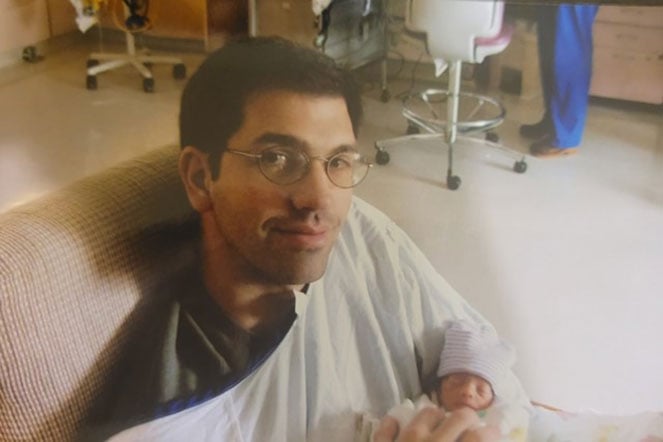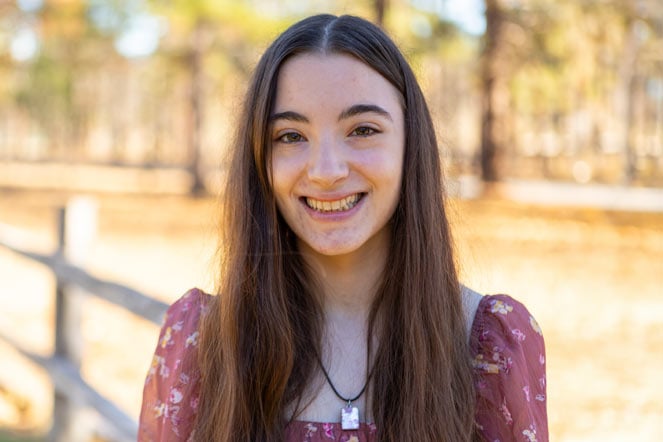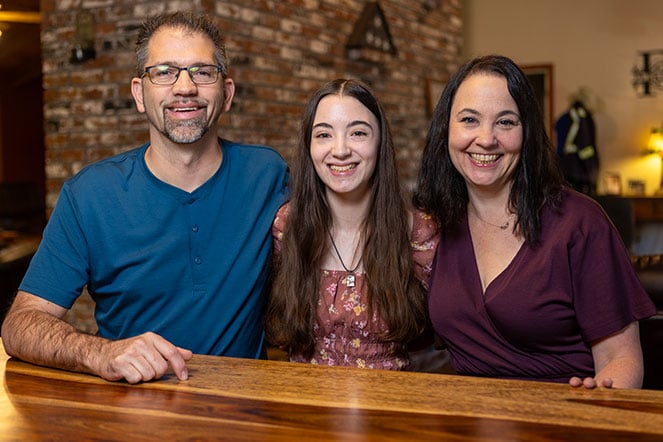A Second Diagnosis: Idiopathic Scoliosis
During a routine follow-up gait study, her medical team noticed something. After recovering from her first surgery, Tessa’s spine started to curve. She had developed adolescent idiopathic scoliosis, an abnormal curvature of the spine that appears in late childhood or adolescence. Instead of growing straight, the spine develops a side-to-side curvature, usually in an elongated "S" or "C" shape. The bones of the spine are also slightly twisted or rotated. Thankfully, Shriners Children’s Northern California has a highly reputable spine care program with a pediatric orthopedics department nationally recognized by U.S. News & World Report, in partnership with UC Davis Children’s Hospital. Tessa was able to seek additional treatment from a care team her family knew and trusted.
Tessa’s spinal curve was aggressive, so doctors planned her surgical treatment right away.
At the end of sixth grade, Tessa had her second surgery – this time for the major curve in her spine.
“It’s crazy how they were able to straighten it so much,” Tessa said. “It blows my mind every time I think about it. My quality of life is so much better.”
Following her spine surgery, Tessa received foot surgery to correct her intoeing, which occurs when feet point inward while walking. Her more-affected foot was corrected first, and the other foot will receive treatment later next year.
“Jon Davids, M.D., went above and beyond to accommodate Tessa’s school schedule,” said Tessa’s mom, Diane. “She was afraid she would get behind on school work because of surgery, so he made sure to schedule it after school was out for the summer. This eased Tessa’s worries so much going into surgery.”
After each of Tessa’s surgeries, she woke up to a gift bag full of goodies, including fun pillowcases and toys. This small gesture brightened her day and made the healing process easier.
“When I had my first surgery, I really didn’t expect it,” said Tessa. “It was a really nice surprise.”
Inspired to Give Back
Tessa’s positive experiences at Shriners Children’s sparked an idea for her senior year project: a fundraiser to supply toys for Shriners Children’s patients recovering from surgery, Tessa’s way of paying it back.
For her project, she created a video describing her experience with Shriners Children’s Northern California, and the impact a toy can make. She shared the video with her community, friends and family. Tessa raised over $6,000 to support Shriners Children’s. A portion of the funds supported the Bear Den, which gives patients the opportunity to choose a stuffed animal and accessories after an appointment or procedure.
Tessa’s work with Shriners Children’s has expanded: She is now a Shriners Children’s Northern California Patient Ambassador, sharing her story and care journey with Shriners Children's, in communities across the state.
“I want everyone to know about Shriners Children’s,” said Tessa. “My hope is that sharing my story and experience will also inspire others to pursue medical care here, or help raise funds to support care for others who need it.”








